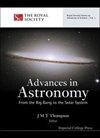Spectral Feature Extraction Using Partial and General Method
IF 1.2
4区 物理与天体物理
Q3 ASTRONOMY & ASTROPHYSICS
引用次数: 0
Abstract
With the rapid growth in astronomical spectra produced by large sky survey telescopes, traditional manual classification processes can no longer fulfill the requirements of precision and efficiency of spectral classification. There is an urgent need to employ machine learning approaches to conduct automated spectral classification tasks. Feature extraction is a critical step which has a great impact on any classification result. In this paper, a novel gradient-based method together with principal component analysis is proposed for the extraction of partial features of stellar spectra, that is, a feature vector indicating obvious local changes in data, which corresponds to the element line positions in the spectra. Furthermore, a general feature vector is utilized as an additional characteristic centering on the overall tendency of spectra, which can indicate stellar effective temperature. The two feature vectors and raw data are input into three neural networks, respectively, for training and each network votes for a predicted category of spectra. By selecting the class having the maximum votes, different types of spectra can be classified with high accuracy. The experimental results prove that a better performance can be achieved using the partial and general methods in this paper. The method could also be applied to other similar one-dimensional spectra, and the concepts proposed could ultimately expand the scope of machine learning application in astronomical spectral processing.基于部分和一般方法的光谱特征提取
随着大型巡天望远镜产生的天文光谱量的快速增长,传统的人工分类方法已经不能满足光谱分类精度和效率的要求。目前迫切需要采用机器学习方法来进行自动光谱分类任务。特征提取是对分类结果影响很大的关键步骤。本文提出了一种基于梯度与主成分分析相结合的恒星光谱部分特征提取方法,即数据局部变化明显的特征向量,该特征向量对应光谱中元素线的位置。此外,以光谱的总体趋势为中心,利用一般特征向量作为附加特征,可以指示恒星的有效温度。将两个特征向量和原始数据分别输入到三个神经网络中进行训练,每个神经网络对预测的光谱类别进行投票。通过选择得票最多的类别,可以对不同类型的光谱进行高精度分类。实验结果表明,采用局部方法和一般方法可以获得较好的性能。该方法也可以应用于其他类似的一维光谱,所提出的概念最终可以扩大机器学习在天文光谱处理中的应用范围。
本文章由计算机程序翻译,如有差异,请以英文原文为准。
求助全文
约1分钟内获得全文
求助全文
来源期刊

Advances in Astronomy
ASTRONOMY & ASTROPHYSICS-
CiteScore
2.70
自引率
7.10%
发文量
10
审稿时长
22 weeks
期刊介绍:
Advances in Astronomy publishes articles in all areas of astronomy, astrophysics, and cosmology. The journal accepts both observational and theoretical investigations into celestial objects and the wider universe, as well as the reports of new methods and instrumentation for their study.
 求助内容:
求助内容: 应助结果提醒方式:
应助结果提醒方式:


